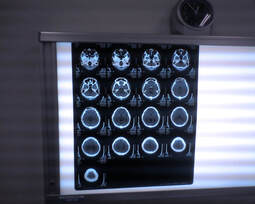Understanding the Complexities of ADHD in Girls
Attention-deficit/hyperactivity disorder (ADHD) is the most common childhood disorder, affecting 9.4% of children in the United States. Although ADHD occurs equally in both sexes, boys with ADHD are four times more likely to be diagnosed than girls with ADHD. This difference suggests that girls with ADHD may be underdiagnosed, meaning their ADHD is left untreated. Researchers believe that developing a full understanding of the ways ADHD appears differently in boys and girls may help close the diagnosis gap.
A common explanation for why girls’ ADHD doesn’t get recognized as often is because girls with ADHD are more likely to show inattentive symptoms, like forgetfulness or getting easily distracted, whereas boys typically show hyperactive or impulsive symptoms, such as difficulty staying still or being quiet. It is believed that teachers and parents identify ADHD in boys more commonly because their behavior is often more loud or disruptive compared to girls with ADHD. It is highly likely that the way society has learned to identify ADHD in children has led to an ADHD stereotype of a “disruptive boy,” which influences the way parents and teachers advise children to get evaluated for ADHD. Another key difference in the way ADHD appears is that girls and women are more likely to have emotional symptoms such as lack of self-confidence, anxiety, or depression.
A common explanation for why girls’ ADHD doesn’t get recognized as often is because girls with ADHD are more likely to show inattentive symptoms, like forgetfulness or getting easily distracted, whereas boys typically show hyperactive or impulsive symptoms, such as difficulty staying still or being quiet. It is believed that teachers and parents identify ADHD in boys more commonly because their behavior is often more loud or disruptive compared to girls with ADHD. It is highly likely that the way society has learned to identify ADHD in children has led to an ADHD stereotype of a “disruptive boy,” which influences the way parents and teachers advise children to get evaluated for ADHD. Another key difference in the way ADHD appears is that girls and women are more likely to have emotional symptoms such as lack of self-confidence, anxiety, or depression.
Image Source: Concord90
The Diagnostic and Statistical Manual of Mental Disorders (DSM-IV), a book outlining symptoms and behaviors typical to specific mental disorders by the American Psychiatric Association, generally characterizes ADHD by persistent patterns of inattention and/or hyperactivity that interfere with daily functioning and development. However, critics believe diagnostic criteria are often generalized towards male symptoms and exclude experiences of females because emotional symptoms are largely ignored within the criteria. For this reason, a 2019 study was examined which factors influence the way parents perceive and recognize symptoms of ADHD as compared to the disorder’s diagnostic criteria for children in the US. Consistent with this view, the study reports that parents perceived the DSM-IV ADHD criteria as being more descriptive of boys compared to girls. If sex-specific stereotypes of ADHD exist, then it is possible parents and teachers may not as readily recognize manifestations of ADHD in girls as compared to boys.
Because of this, researchers investigated which factors/symptoms of ADHD impacted whether or not boys and girls met the criteria for being diagnosed. In the study, researchers compared girls and boys who met full ADHD diagnostic criteria to those who showed multiple ADHD symptoms yet not enough to meet diagnostic criteria. The study found that diagnosed girls had to display more symptoms of ADHD as compared to boys. These findings could suggest that girls with ADHD have to show much more intense or heightened behavioral/emotional problems before they meet the criteria for ADHD.
The researchers’ goal was to close the gap between boys and girls having their ADHD equally recognized in order for girls and women to get the treatment they need. If left with untreated ADHD, girls and women are more likely to develop additional mood disorders, anxiety, and self-esteem issues as a result of their condition. As a result, girls and women are often left with either no treatment or inadequate treatment that does not address the entirety of their ADHD symptoms.
Because of this, researchers investigated which factors/symptoms of ADHD impacted whether or not boys and girls met the criteria for being diagnosed. In the study, researchers compared girls and boys who met full ADHD diagnostic criteria to those who showed multiple ADHD symptoms yet not enough to meet diagnostic criteria. The study found that diagnosed girls had to display more symptoms of ADHD as compared to boys. These findings could suggest that girls with ADHD have to show much more intense or heightened behavioral/emotional problems before they meet the criteria for ADHD.
The researchers’ goal was to close the gap between boys and girls having their ADHD equally recognized in order for girls and women to get the treatment they need. If left with untreated ADHD, girls and women are more likely to develop additional mood disorders, anxiety, and self-esteem issues as a result of their condition. As a result, girls and women are often left with either no treatment or inadequate treatment that does not address the entirety of their ADHD symptoms.
Featured Image Source: KoKoColey
RELATED ARTICLES
|
Vertical Divider
|
Vertical Divider
|
Vertical Divider
|






